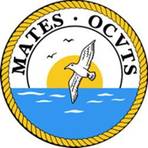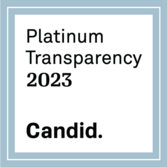Rally for Barnegat Bay
A collaborative initiative with Save Barnegat Bay, Marine Academy of Technology and Environmental Science,and New Jersey Department of Environmental Protection to track down and eliminate sources of sanitary sewage in the Toms River subwatershed using a find it, fix it, no blame game approach to improve the health of Barnegat Bay, started in 2020 and is ongoing.

The Problem
- The Barnegat Bay Watershed is a 660 square mile area that includes 37 municipalities and nearly 660,000 people.
- The Barnegat Bay Watershed has suffered from water quality impairments in the past few decades due to nutrient enrichment and pathogen pollution. These impairments have been the focus of numerous studies and state management and monitoring efforts, culminating in a special Barnegat Bay comprehensive action plan which was initiated in 2010.
- Nonpoint source runoff and sanitary sewer infrastructure deficiencies from upstream sources are the frequent and significant contributors to pathogen and nutrient pollution of the Barnegat Bay Watershed.
- The chronic pollution of the Barnegat Bay and the possible sources from upstream make it imperative to conduct a much-needed, comprehensive source track-down of sanitary sewage, specifically bacteria source track-down, in order to successfully plan and implement watershed management and restoration efforts.
- The Toms River subwatershed, within the Barnegat Bay watershed, does not support four designated uses: general aquatic life, recreation, shellfish, and fish consumption. The Toms River and its tributaries also routinely do not meet the standards for bacteria quality for recreational use and are non-attaining for fecal indicator bacteria, including E. coli and Enterococcus. There are six recreational bathing beaches in Toms River which routinely have advisories or closures after rain events due to elevated levels of bacteria in these waters.
- COA assimilated all available information and data to prepare an informative report on the state of pathogen pollution in the Toms River watershed. Key sources of literature and data were obtained from research reports from Barnegat Bay Partnership, Save Barnegat Bay (SBB), Rutgers University, NJDEP's Coopeartive Coastal Monitoring Program (CCMP), and water quality monitoring conducted by Marine Academy of Technology and Environmental Science (MATES) students under SBB's Student Grant Program. The report identified areas of concern that need additional monitoring to help fulfill the goals of this source track down study which will be used to select sites for ongoing water quality monitoring.
The Solution: Find it, Fix it
- Rally for Barnegat Bay is a collaborative project that will engage municipalities and citizens to find and fix sources of pathogen pollution within the Toms River subwatershed, specifically the Toms River and its surrounding municipalities. This project will focus on eliminating sources of sanitary sewage in the Toms River subwatershed to improve water quality in Barnegat Bay.
- Pathogen source track-down investigations will be conducted in the following "river towns": Toms River, South Toms River, Pine Beach, Beachwood, Island Heights, and Ocean Gate.
- The project provides municipalities with access to funding to fix sources of sanitary sewage; elimination of sources will be verified with analytical test results.
Interested in volunteering as a community scientist? Fill out our RBB volunteer form here.
To get involved or for more information, email Programs@CleanOceanAction.org or call 732-872-0111
This project is supported through a contract funded by a Nonpoint Source (NPS) Water Quality Restoration and Federal 319(h) grant awarded by the New Jersey Department of Environmental protection to address pathogen pollution in the Barnegat Bay Watershed. This project is a collaboration of Clean Ocean Action, Save Barnegat Bay, and the Marine Academy of Technology and Environmental Science. The project began in late 2020 and will be ongoing through 2024.

